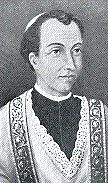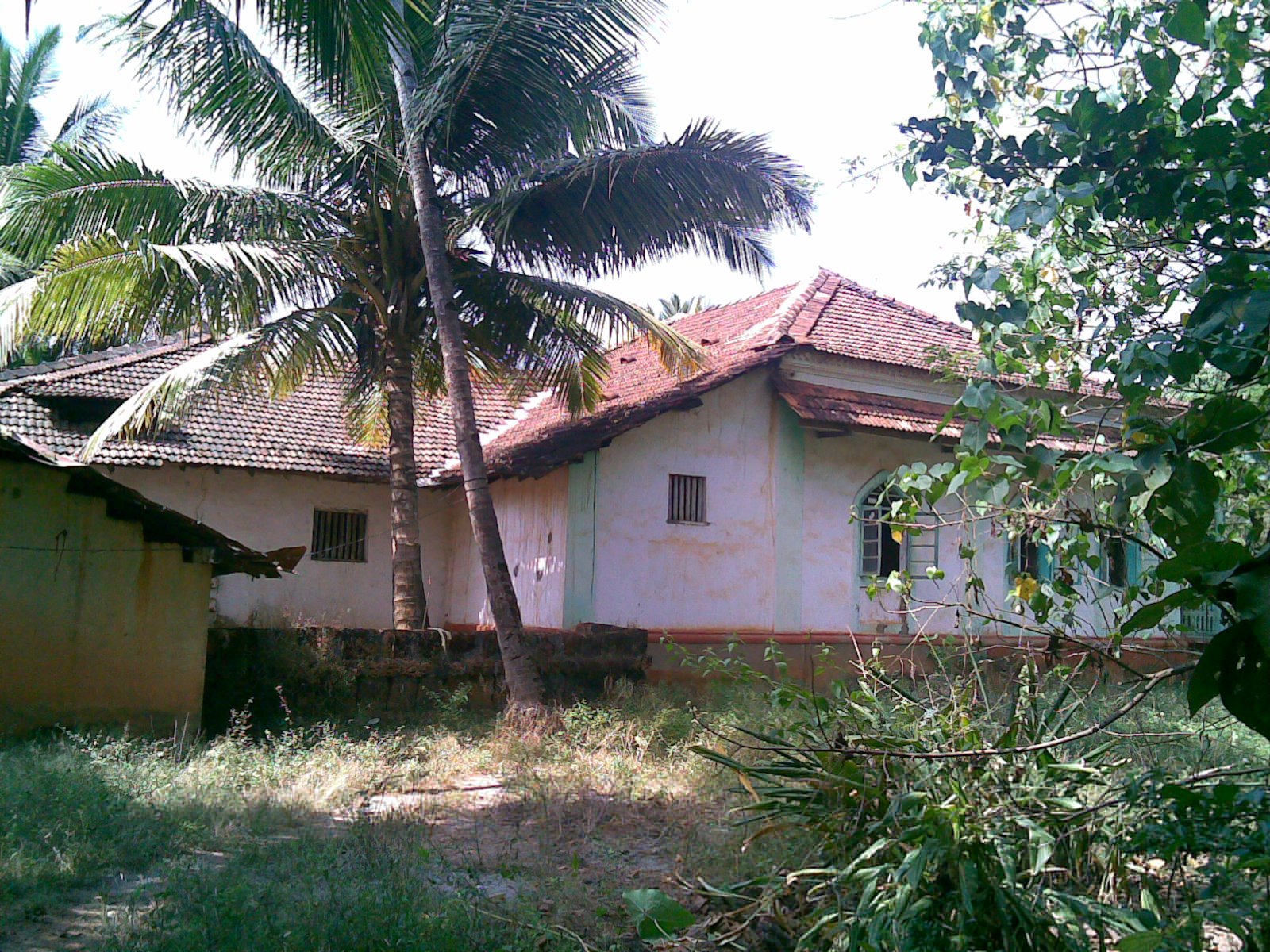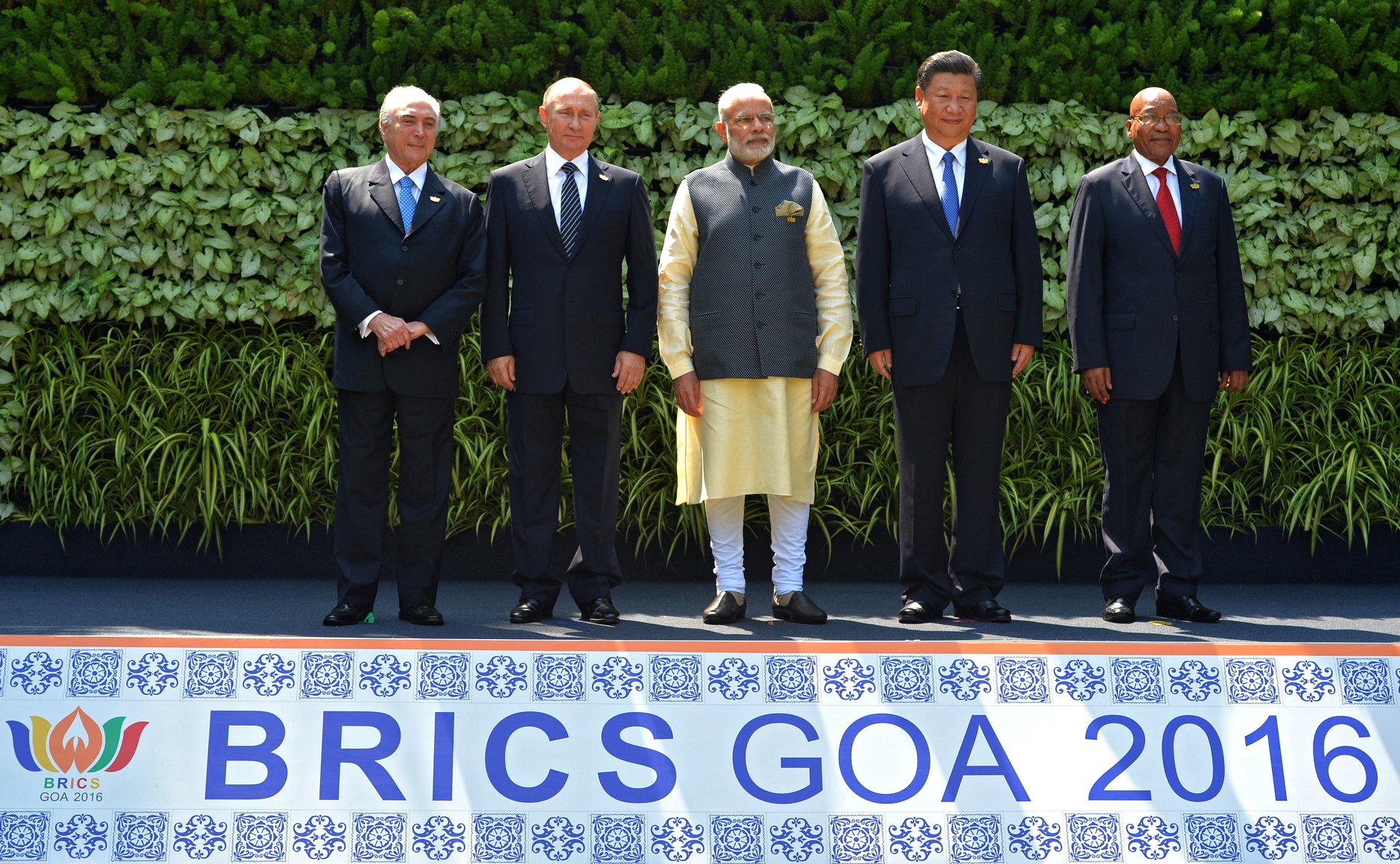|
Benaulim
Benaulim is a village in the state of Goa, India. Located in Salcete taluka of South Goa district, it neighbours Colva village to the north, Margao in the northeast and Varca village to the south. During Portuguese rule, it was one of the nine communidades in Salcete. Benaulim is the birthplace of St Joseph Vaz, who was a priest and missionary in Sri Lanka. Benaulim is home to several traditional carpenters, and has long been known as Goa's 'village of carpenters'. Contemporary Benaulim is a popular seaside resort, renowned for its beautiful rice fields, balmy weather and golden sand beaches. It also houses Goa's only Don Bosco Animation Centre. There are two big churches in Benaulim. The Holy Trinity Church in Mazilvaddo is a modern church built over the centuries-old chapel of the Loiola Pereira family. The St John the Baptist Church in Povacao area closer to Colva, is where St Joseph Vaz was baptised. In 2016, Benaulim hosted the 8th BRICS Summit. Etymology The villag ... [...More Info...] [...Related Items...] OR: [Wikipedia] [Google] [Baidu] |
Joseph Vaz
Joseph Vaz ( Konkani: ''San Zuze Vaza''; pt, São José Vaz; kn, ಪವಿತ್ರಾ ಯೋಸೆಫ್ ವಾಸ್ ಸಂತರು ''Pavitra Yoseph Vaz Santaru''; ta, புனித யோசேப் வாஸ் முனிவர் ''Punitha Sūsai Munivar''; si, ශාන්ත ජුසේ වාස් මුනිතුමා, ශ්රී ලංකාවේ අපෝස්තුළුවරයාණන් ''Santha Juse Vas Munithuma, Sri Lankawe Aposthuluvaraya'') (21 April 165116 January 1711) was an Oratorian priest and missionary in Sri Lanka (Ceylon), originally from Sancoale in Portuguese India. Vaz arrived in Ceylon during the Dutch occupation, when the Dutch were imposing Calvinism as the official religion after taking over from the Portuguese Empire. He travelled throughout the island bringing the Eucharist and the Sacraments to clandestine groups of crypto-Catholics. Later in his mission, he found shelter in the Kingdom of Kandy where he was able t ... [...More Info...] [...Related Items...] OR: [Wikipedia] [Google] [Baidu] |
Salcete
Salcete ( Konkani: ''Saxtti''/''Xaxtti''; pt, Salcette) is a sub-division of the district of South Goa, in the state of Goa, situated by the west coast of India. The Sal river and its backwaters dominate the landscape of Salcete. Historically, the sixty-six settlements south of the River Zuari formed the original Salcette territory. Salcete forms a part of the bigger Konkan region that stretches along the western shoreline of peninsular India. In erstwhile Portuguese Goa, the Salcette ''concelho'' (county) located in the ''Velhas Conquistas'' (Old Conquests) was co-terminous with the undivided Salcette territory (Salcete and Mormugaõ ''talukas''). In 1917, the ''concelho'' was bifurcated into the present-day ''talukas'' of Mormugao and Salcette. The contemporary Salcete ''taluka'' has been classified as a rurban area. Margao serves as the administrative headquarters of both Salcete ''taluka'' and the South Goa district. Etymology "Salcete" is the modern angli ... [...More Info...] [...Related Items...] OR: [Wikipedia] [Google] [Baidu] |
Colva
Colva is a seaside village situated in Salcete subdistrict, South Goa district, Goa state on the west coast of India. Colva Beach spans about along a sandy coastline of approximately extending from Bogmalo in the north to Cabo de Rama in the south. The village had significant importance to Portuguese and was the retreat for Goa's high society, who would come to Colva for their (change of air). Today the Portuguese area is dotted with houses or villas, including many ruins. On weekends, huge crowds of tourists, visitors from around the world as well as local Indians, enjoy the sunset and various activities. The beach is particularly busy in October, when hordes of religious pilgrims come and visit Colva Church, called (Church of Our Lady of Mercies), that was founded in AD 1630 by the Roiz family and rebuilt in the eighteenth century on the village square. The local people have been fishermen since the mid-16th century. They include Hindu converts as well as migrants from ... [...More Info...] [...Related Items...] OR: [Wikipedia] [Google] [Baidu] |
8th BRICS Summit
The 2016 BRICS summit was the eighth annual BRICS summit, an international relations conference attended by the heads of country or heads of government of the five member countries Brazil, Russia, India, China and South Africa. The summit was held from 15 to 16 October 2016 at the Taj Exotica hotel in Benaulim, Goa, India. India holds the chair of the BRICS from February 2016 to December 2016. Background In July 2015, during the 7th BRICS summit, it was announced that India will host the 8th BRICS summit in 2016. In March 2016, Goa was announced as the venue of the summit. Participants Sideline events The first BRICS film festival was held at New Delhi from 2 to 6 September 2016. The five-day film festival screened four films each from the participating States. The environment ministers of BRICS states held a meeting on 16 September in Goa and they agreed on a memorandum of understanding and announced the setting up of a joint working group institutionalising their mutua ... [...More Info...] [...Related Items...] OR: [Wikipedia] [Google] [Baidu] |
Banawali
Banawali (Devanagari: बनावली) is an archaeological site belonging to Indus Valley civilization period in fatehabad district, Haryana, India and is located about 120 km northeast of Kalibangan and 16 km from Fatehabad. Banawali, which is earlier called Vanavali, is on the left banks of dried up Sarasvati River. Comparing to Kalibangan, which was a town established in lower middle valley of dried up Sarasvathi River, Banawali was built over upper middle valley of Sarasvathi River.fatehabad.nic.in Excavation This site was excavated by R.S. Bisht (ASI) in 1974. The excavations revealed the following sequence of cultures: * Period I: Pre-Harappan (Kalibangan)(c.2500-2300 BCE) ** Period IA: Pre-defence Phase ** Period IB: Defence Phase ** Period IC: Transitional Phase (Proto-Harappan) * Period II: Mature Harappan (c.2300-1700 BCE) * Period III: Post-Harappan (Banawali-Bara)(c.1700-1500/1450 BCE) Period I (c. 2500-2300 BCE) Well-planned houses constructed out o ... [...More Info...] [...Related Items...] OR: [Wikipedia] [Google] [Baidu] |
Margao
Margao or Madgaon is the commercial capital of the Indian state of Goa. It stands on banks of the Sal river and is the administrative headquarters of Salcete sub-district and South Goa district. It is Goa's second largest city by population after Vasco. Etymology ''Margão'' is the Portuguese spelling, with (''Madgao'') being used in Konkani. The etymology of the name has been debated, with theories ranging from the name having evolved from the pre-colonial Mahargao (“village of Mahars”, a large community of weavers) to being derived from the Sanskrit (''Maṭhagrāma'') which means "a village of monasteries" owing to the shrines of Matsyendranath and Gorakhnath in ''Ravanphond'', now a suburb of Margao. Alternatively Margão may be derived from Mharuganv, “village of demons”, or Maravile, Portuguese for “marvellous village.” History Margao in pre-Portuguese times was one of the important settlements in Salcete and known as ''Matha Grama'' (the village of M ... [...More Info...] [...Related Items...] OR: [Wikipedia] [Google] [Baidu] |
Benauli
Benauli is a town and Village Development Committee in Bara District in the Narayani Zone of south-eastern Nepal. At the time of the 1991 Nepal census The 1991 Nepal census was a widespread national census conducted by the Nepal Central Bureau of Statistics. Working with Nepal's Village Development Committees at a district level, they recorded data from all the main towns and villages of each ... it had a population of 5110 persons living in 659 individual households. Ward No. 7 Ward Office: - Benauli Includes Vdc: - Benauli (Ward 1 - 9) Total Area: - 7.62 (Square K.M.) Total Population: - 5110 (2011) Ward Contact Person Name, Post, and Contact References External linksUN map of the municipalities of Bara District Populated places in Bara District {{Bara-geo-stub ... [...More Info...] [...Related Items...] OR: [Wikipedia] [Google] [Baidu] |
Goud Saraswat Brahmin
Gaud Saraswat Brahmins (GSB) (also Goud or Gawd) are a Hindu Brahmin community of the north. The Konkani speaking Gaud Saraswat of Goa and southern India claim to be descendents of these Gaud Saraswat Brahmins of the north that migrated to Konkan from Gaud, as per the Skanda Purana. Their traditional occupation was trading. Etymology There are many interpretations on how the Gaud Saraswat Brahmins received the name "Gaud" and the information about it is scant. Authors Jose Patrocinio De Souza and Alfred D'Cruz interpreters that the word ''Gauda'' or ''Goud'' may have been taken from ''Ghaggar'', with ''Goud'' and ''Saraswat'' having the same meaning, that is an individual residing on the banks of river Saraswati. Scholars write that "Shenvi" and "Gaud Saraswat Brahmin" are synonyms. Historically, Jana Tschurenev states that the Shenvis were a community that claimed to be Brahmins. The name GSB is a modern construction based on newly curated caste history and origin legends ... [...More Info...] [...Related Items...] OR: [Wikipedia] [Google] [Baidu] |
Varuna
Varuna (; sa, वरुण, , Malay: ''Baruna'') is a Vedic deity associated initially with the sky, later also with the seas as well as Ṛta (justice) and Satya (truth). He is found in the oldest layer of Vedic literature of Hinduism, such as hymn 7.86 of the ''Rigveda''. He is also mentioned in the Tamil grammar work '' Tolkāppiyam'', as Kadalon the god of sea and rain. He is said to be the son of Kashyapa (one of the seven ancient sages). In the Hindu Puranas, Varuna is the god of oceans, his vehicle is a Makara (crocodile) and his weapon is a Pasha (noose, rope loop). He is the guardian deity of the western direction. In some texts, he is the father of the Vedic sage Vasishtha. Varuna is found in Japanese Buddhist mythology as Suiten. He is also found in Jainism. Etymology In Hindu tradition, the theonym ''Váruṇa'' (Devanagari: वरुण) is described as a derivation from the verbal root ''vṛ'' ("to surround, to cover" or "to restrain, bind") by means ... [...More Info...] [...Related Items...] OR: [Wikipedia] [Google] [Baidu] |
Shiva
Shiva (; sa, शिव, lit=The Auspicious One, Śiva ), also known as Mahadeva (; ɐɦaːd̪eːʋɐ, or Hara, is one of the principal deities of Hinduism. He is the Supreme Being in Shaivism, one of the major traditions within Hinduism. Shiva is known as "The Destroyer" within the Trimurti, the Hindu trinity which also includes Brahma and Vishnu. In the Shaivite tradition, Shiva is the Supreme Lord who creates, protects and transforms the universe. In the goddess-oriented Shakta tradition, the Supreme Goddess ( Devi) is regarded as the energy and creative power (Shakti) and the equal complementary partner of Shiva. Shiva is one of the five equivalent deities in Panchayatana puja of the Smarta tradition of Hinduism. Shiva has many aspects, benevolent as well as fearsome. In benevolent aspects, he is depicted as an omniscient Yogi who lives an ascetic life on Mount Kailash as well as a householder with his wife Parvati and his three children, Ganesha, Kartikeya and A ... [...More Info...] [...Related Items...] OR: [Wikipedia] [Google] [Baidu] |
Skanda Purana
The ''Skanda Purana'' (IAST: Skanda Purāṇa) is the largest ''Puranas#Mahapuranas, Mukyapurana'', a genre of eighteen Hindu religious texts. The text contains over 81,000 verses, and is of Kaumaram, Kaumara literature, titled after Kartikeya, Skanda, a son of Shiva and Parvati, who is also known as Murugan. While the text is named after Skanda, he does not feature either more or less prominently in this text than in other Shiva-related Puranas. The text has been an important historical record and influence on the Hindu traditions related to the war-god Skanda. The earliest text titled ''Skanda Purana'' likely existed by the 8th century CE, but the ''Skanda Purana'' that has survived into the modern era exists in many versions. It is considered as a living text, which has been widely edited, over many centuries, creating numerous variants. The common elements in the variant editions encyclopedically cover cosmogony, mythology, genealogy, dharma, festivals, gemology, temples, g ... [...More Info...] [...Related Items...] OR: [Wikipedia] [Google] [Baidu] |
Sahyadrikhanda
Sahyādrikhaṇḍa or Sahyadri Khand, written in Sanskrit, and is considered as part of Skandapurāṇa.Shastri, P. (1995) ''Introduction to the Puranas'', New Delhi: Rashtriya Sanskrit Sansthan, pp.118-20 One of its interpolated versions from 1700CE contains the legend of the origin of the Brahmin identities like Chitpavan Brahmins and Saraswat Brahmins while deliberately slandering authentic Brahmin communities like Karhade Brahmins. The ''Sahyadri-khanda'' includes disparate texts that date from 5th to 13th centuries, and have been organized as part of a single text relatively recently. Description There is an elaborate description about the creation of Paraśurāma kṣetra. In one place the land is stated to have been created by Paraśurāma by shooting an arrow, while in another place the land is created by throwing an axe. Experts in the field of Archaeology feel that the place where Parashurama's arrow landed is believed to be the present day Goa. The Kannaḍa version ... [...More Info...] [...Related Items...] OR: [Wikipedia] [Google] [Baidu] |








